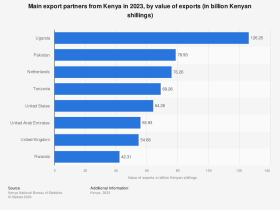
Syria’s main businesses
Syria’s main businesses and economic sectors are shaped by its geopolitical location, natural resources, and historical legacy. Despite facing significant challenges due to prolonged conflict, sanctions, and economic instability, some industries remain vital to the Syrian economy. Below is an overview of Syria’s main businesses:
1. Agriculture
Agriculture has historically been a cornerstone of Syria’s economy, contributing significantly to GDP and employment. Major crops include wheat, barley, cotton, olives, fruits, and vegetables. Olive oil production is particularly important, with Syria being a major global producer before the conflict. Livestock farming, including sheep, goats, and poultry, also plays a significant role.
2. Oil and Gas
Syria possesses considerable oil and gas reserves, mainly located in the eastern regions of the country. Before the conflict, oil exports were a significant source of government revenue. Although production has declined due to infrastructure damage and control by various factions, oil and gas remain critical industries. There are ongoing efforts to rehabilitate this sector.
3. Textiles
Syria has a long history in textile production, especially in Aleppo and Damascus. The country is known for its high-quality fabrics, including cotton, silk, and wool. Despite the decline in production during the conflict, small-scale textile workshops and factories continue to operate, catering to domestic markets and limited exports.
4. Manufacturing
The manufacturing sector, which includes food processing, cement, glass, and pharmaceuticals, was a significant contributor to Syria’s economy before the conflict. Pharmaceuticals, in particular, remain one of the more resilient industries, supplying both domestic and neighboring markets.
5. Tourism
Syria’s rich historical and cultural heritage, including sites like Palmyra, Aleppo’s Old City, and the Umayyad Mosque in Damascus, once made tourism a thriving industry. The conflict devastated much of this sector, but efforts are being made to restore historical sites and attract regional tourists.
6. Trade and Commerce
Syria’s strategic location as a crossroads between Asia, Europe, and Africa historically made it a hub for trade. Domestic markets are characterized by small and medium enterprises (SMEs), traditional souks, and wholesale trade. International trade, however, has been severely affected by sanctions and political isolation.
7. Construction
Reconstruction is emerging as a vital business area, with opportunities in rebuilding damaged infrastructure, homes, and public facilities. Both local and international companies are eyeing this sector, though challenges like funding, security, and sanctions persist.
8. Handicrafts
Syria is renowned for its traditional crafts, including inlaid woodwork, mosaic art, pottery, and glassblowing. These industries are often family-run and cater to both local and international markets. Despite challenges, handicrafts remain an important cultural and economic activity.
9. Services
The service sector includes banking, telecommunications, and education. Although banking operations are restricted by sanctions, local financial services still support businesses and individuals. Education, both public and private, remains a critical sector despite war-related disruptions.
10. Transportation and Logistics
Syria’s position as a transit point for regional trade gives it potential in the logistics and transportation sectors. However, the damage to infrastructure and ongoing security concerns limit its full development.
Challenges and Opportunities
While Syria’s economy faces obstacles such as international sanctions, damaged infrastructure, and limited foreign investment, the resilience of its population and resources offers opportunities for recovery. Key areas like agriculture, reconstruction, and small-scale manufacturing hold promise for future growth.
In conclusion, Syria’s main businesses reflect its historical strengths and current challenges. While the path to economic recovery is long, strategic investment and international cooperation could help rebuild key industries.



Leave a Reply